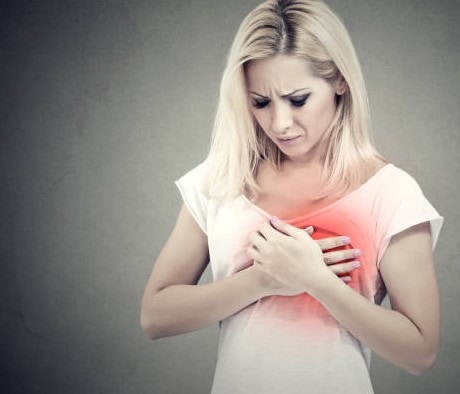What Is Mastitis?
Mastitis, is an inflammation of breast tissue that most commonly affects breastfeeding moms. This inflammation causes redness, warmth, swelling and pain in one or both breasts. You might also have fever and chills. It may be accompanied by an infection.
Although mastitis can occur any time you’re breastfeeding, it’s more likely to happen within the first six months. Because you can feel tired and run down, you might consider weaning you baby before you mean to. Breastfeeding has tremendous benefits for your baby. That’s why the Mayo Clinic recommends you continue to breastfeed even while taking antibiotics to treat the mastitis.
Symptoms of Mastitis
Signs and symptoms of mastitis can appear suddenly, including:
- Tender breast or warm to the touch
- Breast swelling
- Thickening of breast tissue, or a breast lump
- Pain or a burning sensation continuously or while breast-feeding
- Skin redness, often in a wedge-shaped pattern
- Generally feeling tired and sick
- Fever of 101 F (38.3 C) or greater
How to Diagnose Mastitis
Contact your doctor if you think you have mastitis. Your doctor will examine your breasts and recommend a treatment. If the mastitis doesn’t clear up or continues to get worse, your doctor may order the following tests:
- Breastmilk culture: If your infection is severe, occurred in the hospital, or isn’t responding to antibiotics, your doctor may order a culture.
- Ultrasound: Sometimes doctors will order an ultrasound if your condition doesn’t improve within 48 to 72 hours.
- Blood cultures: If your breast redness continues to worsen and your vital signs become unstable, the doctor may order a blood culture.
Mastitis Treatment
Your doctor may prescribe an antibiotic to clear up the mastitis. Rest, and the regular removal of milk from your breasts will help you to recover more quickly. If you do take antibiotic and continue to breastfeed, be sure to talk with your doctor about how best to avoid thrush.
When you have mastitis, it’s important that you take good care of yourself while your body recovers.
- Get plenty of rest
- Drink plenty of fluids, especially water
- Eat a healthy, balanced diet
- Massage the swollen, tender area to help loosen any clogged breast milk
- Massaging the breast at the affected area and work your way up to the nipple
- Use a cold compress or cold cloth after each feeding to relieve pain and swelling
- Ask your doctor if you can take a pain reliever like Tylenol (acetaminophen) or Motrin (ibuprofen) to reduce pain and swelling
What Causes Mastitis?
Mastitis is usually caused by milk that’s trapped in the breast. Other causes include:
- A blocked milk duct. If a breast doesn’t completely empty at feedings, one of your milk ducts can become clogged. The blockage causes milk to back up, leading to breast infection.
- Bacteria entering your breast. Bacteria from your skin’s surface and baby’s mouth can enter the milk ducts through a crack in the skin of your nipple or through a milk duct opening. Stagnant milk in a breast that isn’t emptied provides a breeding ground for the bacteria.
Mastitis Prevention
Minimize your chances of getting mastitis by following these tips:
- Fully drain the milk from your breasts while breastfeeding.
- Allow your baby to completely empty one breast before switching to the other breast during feeding.
- Change the position you use to breast-feed from one feeding to the next.
- Make sure your baby latches on properly during feedings.
- Prevent your breasts from becoming engorged by pumping or hand expressing your breast milk
- Avoid wearing tight bras or anything that confines, restricts, or puts pressure on your breasts
- Wean your baby gradually so your milk supply will gradually go down. This reduces the chance of engorgement, plugged ducts, and mastitis.
- If you smoke, ask your doctor about smoking cessation.
Sources:
La Leche League International – Mastitis
Mayo Clinic






